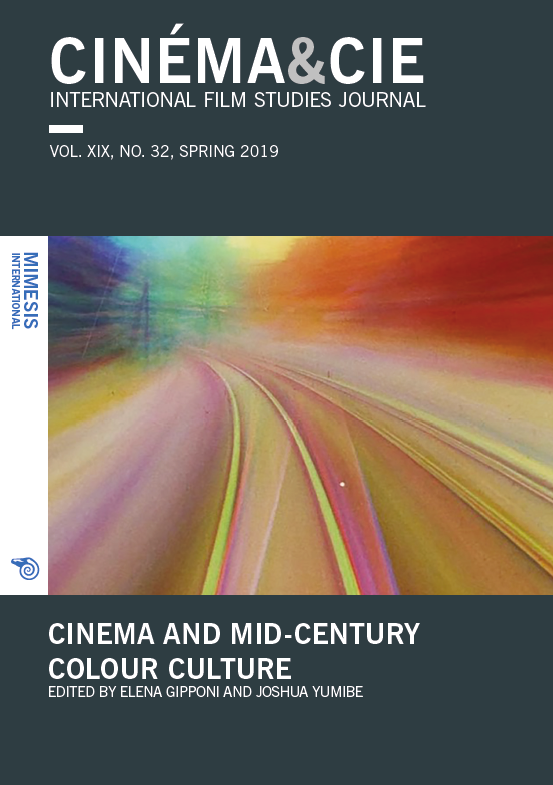From the Margins to the Mainstream? The Eastmancolor Revolution and Challenging the Realist Canon in British Cinema
Abstract
This article focuses on Eastmancolor’s introduction in the British film industry from 1954 to the complete adoption of colour by the end of the 1960s. We discuss how aesthetic experiments with colour offer a compelling parallel history to debates concerning British film genres, films and filmmakers. This approach allows us to see British film history through a different lens, to move beyond the constraints of the monochromatic realist canon and explore familiar and unfamiliar films in the ‘fresh light’ of colour. We select key film genres including the adoption of colour within the social realist film, considering whether black- and-white conventions were disrupted by the addition of colour. The section on Hammer horror films demonstrates how colour popularised a largely dormant British genre, while our consideration of the popular Carry On... comedies looks at colour’s centrality to a new narrative approach for that series. Finally, we consider the historical biopic, focusing on Isadora (Karel Reisz, 1969) in relation to how colour defined thematic and narrative concerns with psychology, temporality and symbolism. We conclude that these years of experimentation constitute an essential transition period in which filmmakers were engaged in a complex negotiation with intermedial chromatic trends.
Downloads
Published
How to Cite
Issue
Section
License
Copyright (c) 2021 Cinéma&Cie. Film and Media Studies Journal

This work is licensed under a Creative Commons Attribution 4.0 International License.





